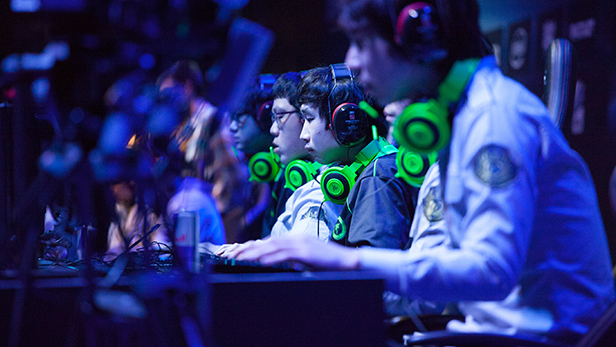ESports have experienced a boom in popularity in recent years. Prize money, viewership, and exposure have all grown to previously unimaginable scales. With competitive gaming becoming commonplace, questions of legitimacy are still raised by its detractors, both by traditional sports fans and analysts alike.
ESports are competitive computer gaming leagues that showcase strategy and teamwork encompassing a variety of genres and game types. The most prominent leagues and circuits are made up of strategy games, such as Dota 2 and League of Legends, and first-person shooters, like Counter Strike: Global Offensive and multiple iterations of Call of Duty.
The debate over the legitimacy of eSports centres in large part around whether the precision and strategy characteristic of competitive gaming is enough to compensate for the lack of physical activity. In response, proponents of eSports tote the necessity of extraordinary hand-eye coordination and refined motor skills. In an opinion piece for Al Jazeera, reporter and neuroscience student Tom Burns reported on the “extremely complex” nature of eSports, claiming the “careful planning, precise timing, and skillful execution” essential to competitive gaming make eSports worthy of recognition. Similar arguments have come up before in support of different sporting events like poker and Formula One racing. However, their respective statuses as real sports remain ambiguous to this day.
Additionally, viewership and industry revenue shows widespread growth. According to Newzoo–the foremost authority on eSports demographics–total revenue reached nearly $500 million with over 300 million viewers in 2016. Newzoo predicts that by 2019, eSports revenue could jump to well over $1 billion and viewership could reach 500 million worldwide. While the projected revenue would only make up a fraction of the billions of dollars mainstream sports bring in each year, the high rate of growth in competitive gaming may bring the industry into contention with the revenue figures seen in other sports industries.
Player compensation has also been feeling the effects of the industry’s growth. The top 100 highest earners in competitive gaming have made from just under $400,000 to over $2.7 million. The majority of these high salaries come from the Dota 2 circuit, where prize pools can generate over $9 million for first place teams and over $20 million in total. For comparison, the average MLB salary is $3.2 million, making the highest of eSports prizes seem merely average at best and demonstrating once again that eSports does not currently have the numbers to generate the same publicity as other sporting events.
While the figures may still not rival traditional athletics, first-hand testimony suggests eSports players train as hard as any other sport. According to a string of Tweets from Astralis, an eSports team from Denmark competing in the Counter Strike: Global Offensive circuit, each of its players spent almost half of 2016 away from home attending events and competing in 29 tournaments. As each competitive gaming tournament consists of multiple games, an eSports team may have the same time commitment to their events as a baseball or football team does, linking what some claim to be completely different types of competitive events.
With all factors considered, eSports will continue to grow despite its critics. The traditional notion of a ‘real’ sport may be centred on physical activity, but competitive gaming shows that the intense strategy, planning, and skill required to compete make eSports just as legitimate a sport as football or soccer.








